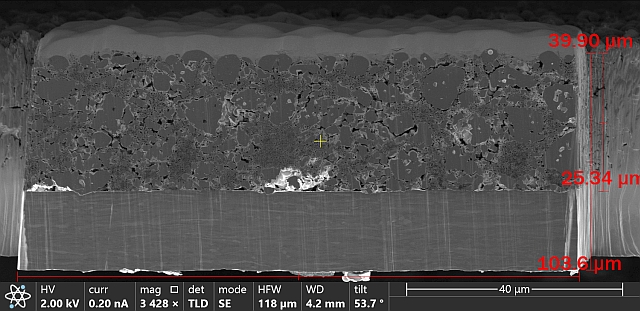Objective of this test
To determine the internal structures of the electrode and check the porosity level of the electrode materials.
Method
- Use Argon ion beam and electron beam to perform the slice and view on the electrode samples
- Perform SEM imaging on each slice and 3D reconstruction of the SEM images
Sample Milling Setup
- Sample: Non-graphite based electrode
- Technique: Auto Slice and View
- Argon ion plasma beam
- Slice thickness: 200nm
- Total no. of slices: 200
- Rocking polish: 5°(minimize curtaining effect)
- Total time of slice and view: ~ 20 hours
 SEM cross-section
SEM cross-section
3D reconstruction of 200 SEM cross-section images (Avizo)
Slice images at different planes (Avizo)
Observe the change of internal structures
Porosity Analysis using Avizo